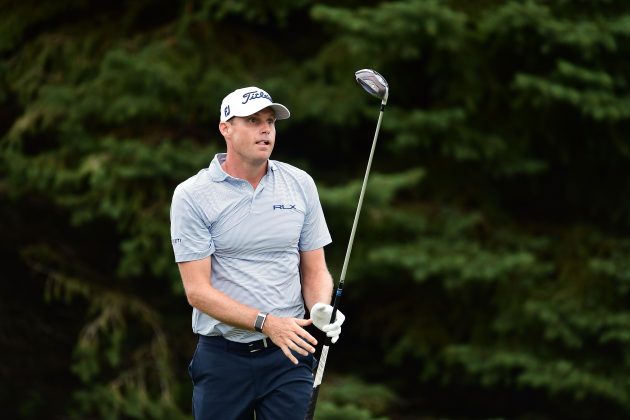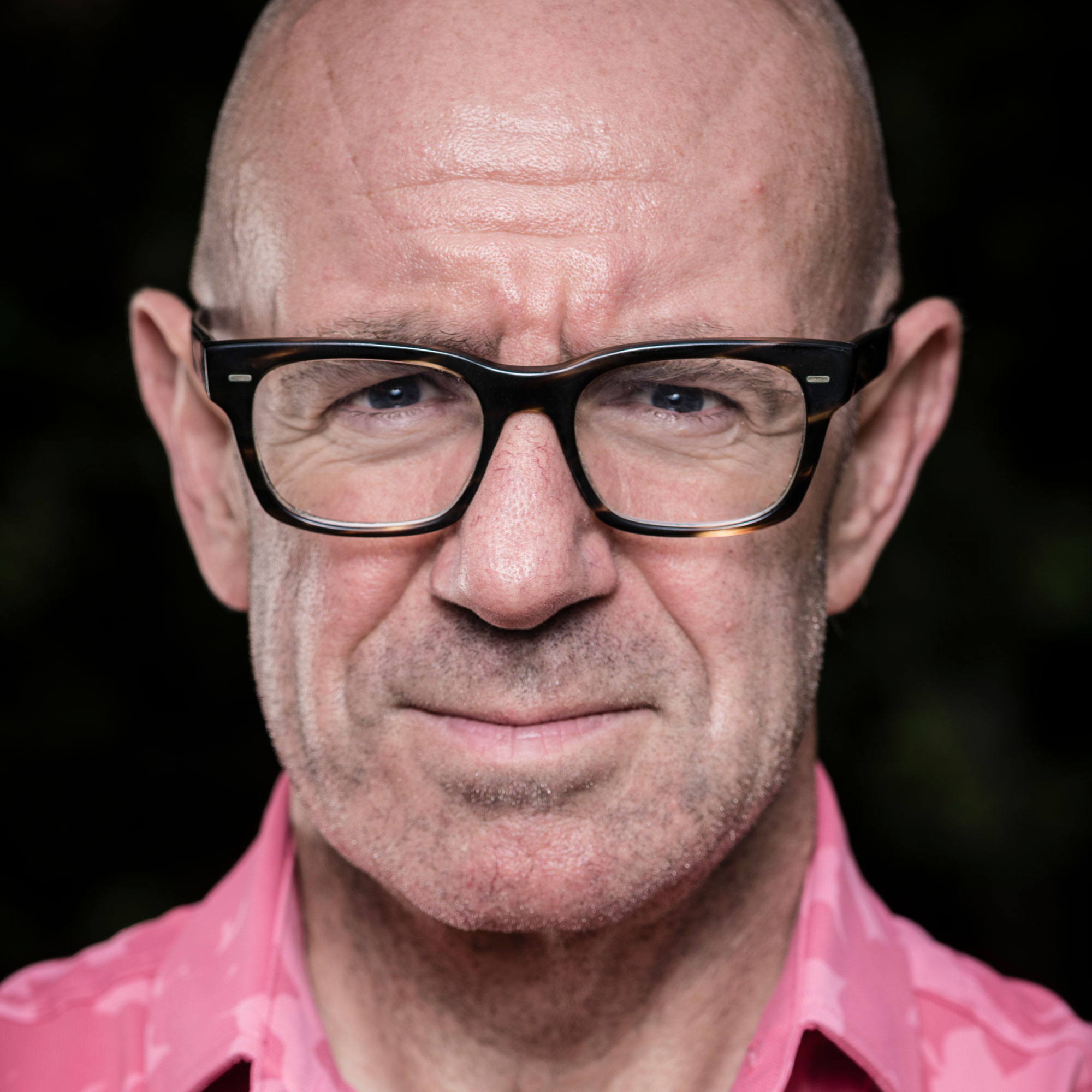Whoop – The Wearable Technology That’s Changing Professional Golf
Whoop - The Wearable Technology That’s Changing Professional Golf


Whoop is fast becoming one of the most recognised fitness brands in the world. With the company now working with both the PGA and LPGA Tours, we sat down with CEO and Founder Will Ahmed, to find out more about the brand.
Whoop - The Wearable Technology That’s Changing Professional Golf
Wearable technology is huge in sport. In golf, one item in particular is rapidly catching on. Not only can wearing one benefit your golf, it can also significantly boost your physical and mental wellbeing.
It’s called Whoop, a fitness and recovery tracker, and it’s the brainchild of Will Ahmed, a former captain of the Harvard men’s varsity squash team.
Dustin Johnson, Rory McIlroy and Justin Thomas are all avid users of Whoop, which, in January, became the official fitness wearable of the PGA Tour and the LPGA in March.
To find how this groundbreaking tech can help the recreational golfer, we spoke to the entrepreneur responsible for its meteoric rise.
Related: Podcast: Is Rory Right? + Whoop CEO Will Ahmed
Subscribe to the Golf Monthly newsletter to stay up to date with all the latest tour news, equipment news, reviews, head-to-heads and buyer’s guides from our team of experienced experts.
How did the concept of Whoop come about?
When I was playing squash as a 20-year-old college athlete, I felt like I didn’t know what I was doing to my body while I was training, I use to overtrain. I did a lot of research and read something like 500 medical papers, then I wrote a paper myself around how to continuously monitor the human body. I founded the company before I had graduated in 2012.
The initial focus was to create technology that could help the world’s best athletes perform at a higher level. Today, we’re fortunate to work with everyone, from the world’s best athletes to everyday executives and general consumers who want to understand and improve their health.

In what way are professional golfers finding it so useful?
It measures strain, recovery and sleep. This idea about balancing strain and recovery is pretty important for optimal performance. If you have a low recovery, which is a sign that your body is run down, you’d want to put less strain on your body. If you have a high recovery, you want to take on more strain. Whoop effectively coaches you across those two paradigms.
Professional golfers undergo a lot more stress than they’re given credit for. These individuals are travelling from time zone to time zone, playing for eight hours a day and doing stuff in the gym, so it’s a long time to be under pressure. They’re realising how much recovery plays a role in their performance.
To quote Rory, the difference between the number one golfer in the world and the number one hundred, on average, is a shot a round. Every little thing they can do, many of which actually happen to be off the golf course, can make a huge difference. We’re now seeing a lot of the top golfers really investing in sleep and recovery as a way to have an edge.
How does it differ to other products in this market?
The core thing Whoop does better is change behaviour and improve health. Wear Whoop for a year, and you’ll have a lower resting heart rate and you’ll get higher quality sleep. You’ll also change three or four things about your lifestyle. A lot of that comes back to the accuracy to which we collect data and the feedback we provide. Whoop is designed to be a 24/7 life coach to help you understand what you need to do.
You don’t pay any golfer to wear Whoop, is that right?
From the earliest days of the company we said that we would never have true sponsorship deals because if the technology lived up to it’s value, the best athletes in the world would want to wear Whoop, in fact they would probably pay for it. If the value wasn’t there, there was no amount of money we could pay a professional athlete to wear it.
Nick Watney was the first player to test positive for coronavirus on the PGA Tour in June last year, and it was his Whoop data that made him get tested…
Nick had been on Whoop for about ten months and his respiratory rate was the same every day, breaths per minute is a very consistent metric. He woke up and had a terrible sleep analysis and a respiratory rate (RR) that was very elevated. We had published research on how RR could be a predictor and Nick had read it. He got tested again and sure enough he tested positive.

The PGA Tour learned of this whole story and as a consequence it procured over a thousand Whoop straps, not just for every professional golfer, but everyone in the bubble. By July, 80-90% of the guys were wearing it. Over the course of 2020 we talked to the PGA Tour about how we could partner in a big way beyond just the golfers wearing it, and we’re now the official wearable of the PGA Tour.
What will this mean?
Firstly it’s about player health and performance, and making sure all the players are able to use Whoop data to perform better. The second is Whoop live integration which is going to allow us to create replays of real golfing events with player heart rate during the moments in time where a player plays a heroic shot; it’s going to be a pretty cool, innovative partnership. Live broadcast data has never been done before so we’re pretty excited by it.

What can Whoop offer the recreational golfer who’s looking for that extra improvement without having to rebuild their swing?
Understanding sleep for the first time is the biggest value that any of us get. For the recreational enthusiast who doesn’t measure their sleep, it’s a black box, a third of your life that you don’t understand. Seven hours in bed doesn’t mean seven hours of sleep. Within that there’s time when you’re awake, there’s light sleep, REM (rapid eye movement) sleep and slow wave sleep.
REM is where all the magic happens, when your mind is repairing. It’s super important for anyone who needs to function at a high cognitive level. If you’re going to be under a lot of stress, you certainly want a lot of REM sleep and slow wave sleep, which is when your body produces about 95 per cent of its human growth hormone.
This idea that you get stronger in the gym is really false, you actually break muscles down in that process and then you rebuild them later during slow wave sleep. REM and slow wave sleep are really where you get all the benefit.
So, more sleep is going to help, especially if you’re playing in a competition the next day, for example?
What I’m saying is, how do we make the time that you spend in bed more effective? If you go from being someone who gets an hour of REM and slow wave a night to two hours of each, it will dramatically change your life, I’m not exaggerating. You’ll be happier, more productive, and you’ll perform at a higher level.
What can people do to improve their sleep?
Going to bed and waking up at the same time will automatically increase the benefits of your sleep. Most people sleep in too warm of a room; you want it cooler and very dark. Eat over three hours before going to bed, as digestion can screw up your sleep. Alcohol is also really bad for sleep and as little as one drink can be disruptive. Most of the professional golfers who wear Whoop won’t have a single glass of alcohol leading up to or during a tournament, because they see how much it disrupts their sleep.
It seems to have become inspirational for a lot of guys to try Whoop because they’ve seen guys like McIlroy and Thomas using it.
The thing that’s quite unique about professional golf is how collaborative it is. Golfers will actually talk to each other about the things they are doing to actually play better; they don’t view that as a secret. Thomas got on Whoop because Rory told him to, and at the time they were number one and three in the world.
Related: What Is WHOOP And Why Are The Best Golfers Wearing It?
My sense is that [Rafa] Nadal is not calling [Roger] Federer at night and saying, ‘Hey you should try this new tool I’ve found’, because their focus is beating each other. In professional golf it’s about beating the course. I’ve had lunch with some of these guys and they’ll take out their phones and be showing each other their recovery from last night and how well they slept. Jon Rahm was asking Tony Finau how he was able to get so many hours of sleep and why his REM sleep was so bad!
Where is Whoop in the future of wearables?
Wearable technology should either be cool or invisible. A lot of wearable technology is kind of stuck in the middle. For us, it’s about how to make a piece of technology that you’re proud to be wearing that says something about who you are. Having a sense of how it can live in other areas of the body can also be valuable for athletes. A professional golfer may not want to wear something on their wrist, and in some sports they don’t want to wear it even on their arm – so that’s an area where we’re doing a lot of research.
How do you get on Whoop?
Visit whoop.com to sign up for a membership that is subscription based, the longer you commit the lower the monthly cost. You’ll get a free Whoop Strap 3.0 and all memberships include this free hardware and software (App and desktop).

Are Whoop on social media?
Follow Whoop on social @whoop and @willahmed. Whoop also produces a weekly podcast hosted by Ahmed and features a lot more information, and includes fascinating insights from the likes of McIlroy and other Whoop wearers.

Mike has been a journalist all his working life, starting out as a football writer with Goal magazine in the 1990s before moving into men’s and women’s lifestyle magazines including Men's Health, In 2003 he joined Golf Monthly and in 2006 he became only the eighth editor in Golf Monthly’s 100-plus year history leading the brand until July 2023. He is now Content Director overseeing Golf Monthly and two other iconic sports brands, FourFourTwo and Rugby World.
His three main passions in golf are courses (he's played over 500 worldwide), equipment (he's always in search of something shiny to give him an edge) and shoes (he owns more pairs than he cares to mention!).
Mike’s handicap index hovers at around 10 and he is a member of six golf clubs: Hartley Wintney, Royal Liverpool, Royal North Devon, Prince's, Royal Norton and the Royal & Ancient Golf Club of St Andrews.
Mike's current What's In The Bag?
Driver: TaylorMade Qi10 10° - Fujikura Ventus Blue 5S - Golf Pride MCC Plus4 grip
Fairway woods: TaylorMade Sim Max 3/15° - Fujikura Ventus Blue 6S & TaylorMade Stealth 7/20° - Fujikura Ventus Red 6S - Golf Pride MCC Plus4 grips
Utility Iron: TaylorMade Stealth UDI 3/21° - Aldila Ascent 90HY - Golf Pride MCC Plus4 grip
Irons: TaylorMade P790 (5-PW) - Fujikura Axiom 75R - Golf Pride MCC Plus4 grips
Wedges: TaylorMade MG4 50°, 54° and 58° - KBS Tour Hi-Rev 2.0 shafts - Golf Pride MCC Plus4 grips
Putter: Evnroll ER2B - Gravity Grip
Ball: TaylorMade - Tour Response (Yellow)